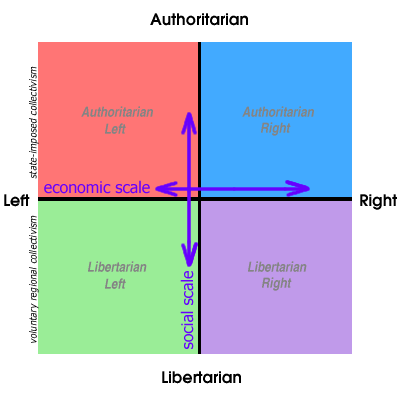
The
Left to Right Continuum
Compared
to US??
Broader,
more varied, more nuanced
Why???
Parties
of the Left
Communists
Social Democrats/Socialists
New Left parties
Greens
Parties
of the Center
Liberals
"Radicals"
Parties of the Right
Christian Democratic
parties
Conservatives
Nationalist
parties/"national fronts"/anti-Immigrant parties
Communist Parties
Strongest in Italy - PCI, now Democratic
Party of the Left; France
Began with links to Bolshevism, Soviet
Union
By 1970s, however, clear shift toward
“Eurocommunism”, i.e., dealignment with Moscow
Mean Support for Communist
Parties
1950s:
7.9%
1990s: 3.5%
Clearly shrinking support
Why?
1) end of Cold War
2) shift to Eurocommunism made
them indistinguishable from Social Dems and other New Left parties
3) changes in European society, economies
i.e., shift to post-industrialism
rise of post-materialist values (Inglehart)
necessitates electoral realignment in the electorate, party system (Kitschelt)
Social Democrats
The most successful party type in post-war
Europe – why??
See Table 8-1 in GLM
Electoral support for soc dem parties
1950s-2000
General Trend: support shrinking.
1950s mean 33.6%; 1990s mean 29.9%
Strongest support in:
Scandinavia,
Austria, Germany, UK (Labour Party)
Definitely, appears to have an
Anglo-Saxon/Scand
bent here – why??
Also strong in:
BENELUX, Fin, France,
Italy
Roots in workers’ movements, trade
unionist
movement (UK esp), “radicalism”
Perhaps this is why support for the party is in decline? Traditional constituency is shrinking???
Or, is it because of move to center???
Two sides of same coin??
New Left
Parties
Strongest in Denmark, Iceland,
Norway.
Scandianvian phenomenon – there 7-8 %
Mean across all countries much less – 1.5-2% over 1960s-1990s pd
What’s different about the
“new left”?
Like “old left” in that they
oppose market forces, and support public ownership,
controlled economy, appeal to working class.
Support welfare state,
social justice, ecological movement.
Different in their emphasis
on libertarian
ideas of freedom and participatory democracy. Share this with the
Greens.
Oppose greater European integration (a
capitalist invention; neo-liberalism)
Green Parties
Strongest in Belgium, France, Luxembourg,
Finland
Second tier Germany, Austria, Switzerland,
Netherlands but note in Government coalition in Germany – their share
of
the vote increased in 2002 Ger elections to 7.5%
General Trend: New in 80s but
increasing
into the 90s. 1980s mean: 2%; 1990s mean: 4.1%
What Greens stand for:
Social justice,
equal treatment of women, racial and ethnic minorities, participatory
democracy
(including party structures – anti-hierarchy).
Skeptical about further European integration.
Liberals
General Trend: Gaining; 1990s just
over 10% mean support
Libertarian strand gaining in Europe
Strong in: the Netherlands - D66, Liberal Party;
(Note: individualist bent in political
cultures in these)
Over 20% in all these.
Some presence: France
(UDF); Germany
(FDP); Sweden ( Moderate
Party; Liberal Party)
Often play important role in coalition
governments.
Libertarian with a left-lean: Freedom,
democracy, decentralization, social justice, individual rights and
freedom.
Share commitment to
welfarism, environmental protection.
Have picked
up vote as traditional left has lost them
Agrarian-Center
Parties
General Trend: constant over
1960s-1990s
About 6.5%
But much higher in Den, Fin, Ice, Switz
Agrarian populist, national, pro-farmer price support parties different
from center parties - Tend
to play a role as mediator, bridge, coalition partner "between" other
more
classically left and right parties.
Christian Democrats
Largest group of the center-right
General trend: losing support over
post-war period
16 country mean:
1950s mean: 20.7%
1990s mean: 14.5%
Strongest in: Germany, Luxembourg
Also strong in: Austria, Belg, Ireland,
Netherlands
Was THE ruling party in Italy until massive
corruption scandal in the 90s – dropped from averages over 36% to only
18% in the 1990s
The winner – Forza Italia – new center right, nationalist coalition
Note: strongest in countries with history of Catholic mass mobilization, “confessional” parties at turn-of-the-century (19th-20th)
But in Germany and Netherlands, e.g., a blending of Catholic and Protestant forces
Newer phenomenon in Ireland (Fine Gael – taking on this role)
What they stand for:
State-oriented
– support strong welfare state - now weakening/"reform" minded
Crucial difference between the US and European
center-right
Why???
Strong advocates of European
integration
Why??
Cultural/religious
agenda here??
Distinguished from
"conservatives" and more nationalist parties on both these grounds
Conservatives
Support neutral over post-war period –
about 18% throughout
Most important in UK, Fianna Fail in
Ireland,
Independence party in Iceland
Forza Italia, in Italy
**Note: where secular conservatism strong, Christian democracy weak or non-existent; and vice versa.
What they stand for:
Some degree
of support to welfare state but lower priority than for others on the
right.
Stronger emphasis on private enterprise, fiscal austerity, gov’t
efficiency,
law and order, trad’l national values, ambiguous toward European
integration.
In other words, they are more
like our right leaners in the US.
Nationalist Parties
Small but growing support in
several countries over the 1990s
less than 15% of national vote but strong majorities in some regions
UK Scottish National Party, Plaid Cymru,
Sinn Fein, Ulster Unionist Party
More xenophonic, anti-immigrant
versions in
Germany - The Republikaners, France - The National Front, Belgium
- Vlamms Bloc, Netherlands - Pim Fortuyn Party, Italy - National
Alliance Party
Complicating the Model: The
Libertarian/Authoritarian Dimension
In response to rise of "left-libertarian" parties, collapse of
"the old Left"

Link to politicalcompass.org